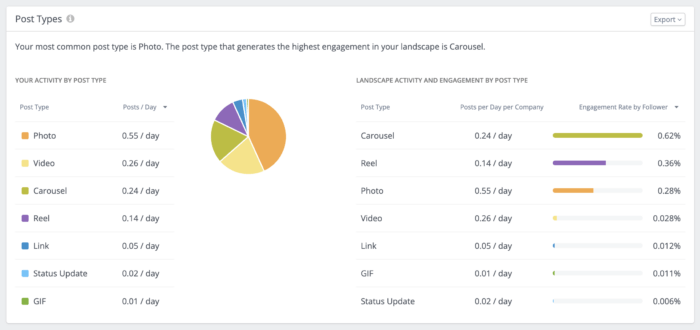When was the last time you made a purchase after seeing a billboard ad? Or reading a direct mail piece from your mailbox? Chances are, you likely drove past the billboard without paying attention and promptly recycled the mail.
The Internet revolution has changed everything about the way people observe and consume the information around them. With “Google It” as the automatic response for everything from solving a dinner party debate to self-diagnosing an illness, people are more empowered than ever to get the information they want, exactly when they want it.
Consumers are incredibly informed, armed with peer testimonials, articles, and public reviews. Outbound marketing just isn’t cutting it anymore. Inbound marketing has taken its place, and for good reason. Here are just a few examples of why inbound strategies are better for business, providing substantial, measurable ROI for marketers.
Inbound Marketing Versus Outbound Marketing
First, let’s define the key differences between outbound and inbound marketing.
Inbound Marketing
This holistic marketing strategy is designed to earn (not buy) the customer’s attention. Rather than broadcasting your message aloud to the public, inbound marketing is all about slowly and steadily bringing people to you through quality content. Some of the most effective inbound tactics include:
- Blogs
- Podcasts
- Videos
- White papers
- Social media
- Webinars
- Landing pages
- Search engine optimization (SEO)
By providing value-added content that remains accessible for a long period, brands can earn people’s attention and, ultimately, their loyalty. Better yet, because this opt-in environment often takes place on digital platforms where user interactions can be tracked and measured, the ROI of inbound marketing is much easier to calculate than outbound.
Outbound Marketing
On the other hand, outbound centers on buying advertising space on TV, radio, direct mail, newspapers, billboards, banner ads, and event sponsorships to reach large groups of people who may find the content appealing. This approach typically catches the customer off guard because the ads intrusively present themselves when the consumer is doing something else.
Due to the inability to accurately track how many people saw the content, the ROI of this approach is difficult to measure. Without straightforward data, marketers are typically forced to make assumptions about the impact the advertising has on consumer purchasing decisions.
How to Calculate the ROI of Inbound Marketing
Inbound marketing can be a game-changer for your business, but how do you know if it’s worth the investment?
First things first, let’s define ROI. ROI stands for return on investment and is a metric used to calculate the profitability of an investment relative to its cost. In the case of inbound marketing, ROI measures the effectiveness of your efforts in generating leads, converting customers, and ultimately driving revenue.
To calculate the ROI of inbound marketing, you’ll need to crunch some numbers. Here’s a simple step-by-step process to get you started:
- Set clear goals. Before diving into calculations, identify your objectives. Whether it’s increasing website traffic, boosting lead generation, or improving sales, having specific goals will guide your analysis.
- Track costs. Determine all the costs associated with your inbound marketing campaign. This includes expenses for content creation, social media management, email marketing tools, and any other resources you use.
- Monitor metrics. Keep a close eye on relevant metrics such as website visits, conversion rates, email open rates, and social media engagement. These metrics provide insights into the effectiveness of your inbound strategies.
- Calculate revenue generated. This includes all the revenue that can be attributed to your inbound marketing efforts. Think sales from leads generated through your blog posts, social media campaigns, or email newsletters. It can also help to assign a monetary value to each conversion, depending on the specific inbound tactic used.
- Compute ROI. Once you have the numbers, it’s time to calculate. Subtract the total costs from the total revenue generated, then divide that number by the total costs and multiply by 100 to get your ROI percentage.
Here’s the formula: ROI = ((Revenue – Cost) / Cost) x 100.
If your ROI is positive, that’s a good sign! Your inbound marketing efforts are profitable. If it’s negative, take the opportunity to analyze what’s not working and make adjustments accordingly.
Remember, calculating the ROI of inbound marketing isn’t a one-time thing. It’s an ongoing process that requires continuous monitoring and adaptation. Approach inbound marketing as a marathon, not a sprint. Be patient and stay focused on providing value to your audience.
Why Inbound Marketing Wins
As consumer experiences become increasingly personalized and curated, the argument for inbound marketing grows stronger by the day. Here are three reasons why it’s such an effective approach in modern marketing.
1. It Strengthens Brand Messaging
In the digital era, quickly telling people what they want or need is no longer effective. A much stronger approach is to carefully craft a message that speaks directly to the consumer, sparking intrigue so that they pay attention by choice and not coincidence or chance.
Instead of having only 30 seconds to share your message, inbound marketing tactics focus on creating quality, long-form content that people can consume at their convenience. This allows you to dive deeper into your brand’s story, showcasing its values, mission, and unique selling points.
Whether it’s through engaging blog posts, informative videos, or fun podcasts, inbound marketing offers a richer experience to potential customers. It’s like having a never-ending conversation with your audience, where every interaction reinforces your brand’s message and builds lasting relationships.
2. It’s Measurable
Another great advantage of inbound marketing is that every action can be tracked, measured, and analyzed. This real-time data enables marketers to assess the current environment, keep a watchful eye on competitors, and determine whether or not target audiences are responding to their efforts.
Today’s marketers have an arsenal of tools to measure every click, scroll, and conversion. Website analytics platforms like Google Analytics let you observe the behavior of visitors on your website, from how long they stay to the actions they take. Email analytics services such as Mailchimp provide insights into open rates, click-through rates, and subscriber behavior.
Of course, we can’t forget about social analytics. Platforms like Rival IQ offer valuable insights into your social media performance. With our comprehensive dashboard of data, you can analyze which posts sparked the most engagement, see how your performance stacks up against competitors, and fine-tune your social strategy for maximum impact.

With these tools at your disposal, every piece of content you create becomes a valuable data point. Whether it’s a social media post, blog, podcast, or another digital outlet, you can dissect and drill down into exactly what works and what doesn’t.

Start analyzing your social media with a free Rival IQ trial.
Get my free trial3. It’s Actionable
Finally, one of the most valuable aspects of inbound marketing is its actionable data, which reveals customer behaviors that you can carefully monitor to better understand the customer psyche.
When someone lands on your website, what do they do first? Do they click on the CTA button you want them to notice, or do they bypass it altogether? Do you see a surge of clicks to your “About Me” section? If so, that may indicate there isn’t enough descriptive information on your homepage. Continuously tracking actions prompted by your inbound efforts provides you with a wealth of information and insights.
This actionable approach sets inbound marketing apart from its outbound counterpart. Unlike outbound tactics, where marketers essentially put content into the world and hope for the best, inbound marketing allows teams to make real-time changes based on audience feedback and changing trends. Digital platforms enable quick thinking and adaptability — if something isn’t working, you can quickly tweak your approach.
Wrapping It Up
In today’s world, the ability to listen and swiftly respond to consumer signals sets smart inbound marketers apart from the pack. Do these examples align with your experience? Have you found inbound marketing to be measurable and actionable, delivering high ROI for your brand? We’d love to know — please tell us about your experiences in the comments.
This post was originally published in 2016 and has since been updated.
